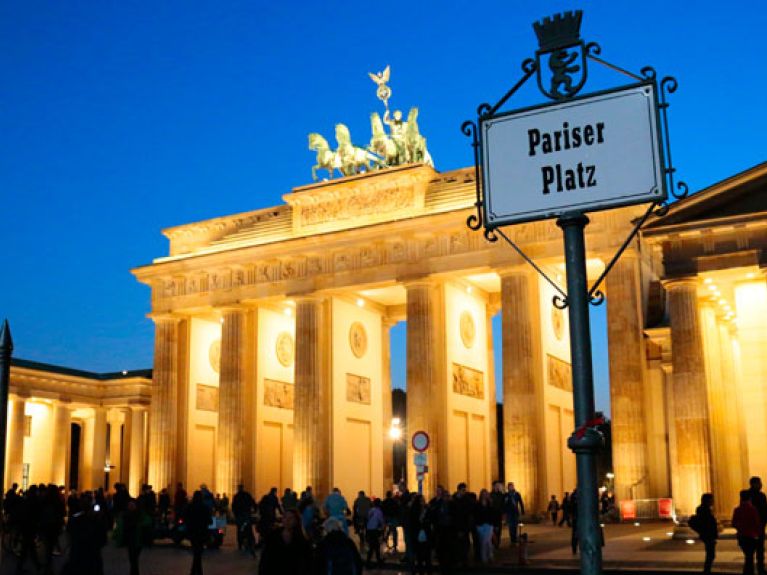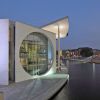25 German years
People in Germany have together made reunification a success story

Anyone in Germany who consciously experienced the day the Wall came down knows exactly where they were on 9 November 1989. Be it in the west or in the east, in the Federal Republic of Germany or in the GDR. A day seared in the collective memory. A day of pure joy. This may not be so easy when it comes to the memory of 3 October 1990, the day when Germany, after four decades of division, was reunited. And yet that day 25 years ago was at least as important for recent German history. German unity became a fact under international law on 3 October 1990 – with the accession of five new federal states: Brandenburg, Mecklenburg-Western Pomerania, Saxony, Saxony-Anhalt and Thuringia “to the scope of validity of the Basic Law of the Federal Republic of Germany”. German unity was made possible by the peaceful revolution in the GDR and the willing approval of the victors in the Second World War. Freedom won the day, and democracy has since governed throughout the country, and not just in the west. The territory of the Federal Republic was enlarged by almost a third and by some 16.5 million inhabitants. On 3 October 1990 Germans celebrated unabashedly: politicians held addresses and there was a great fireworks display in front of the Reichstag in Berlin. A huge crowd moved from there to Pariser Platz in front of the Brandenburg Gate, which for many years had symbolised Germany’s division and now signalled its unity.
For some, back then the joy at reunification was slightly marred by concerns about the future. For many of those who had hitherto lived under the yoke of the GDR dictatorship and were familiar only with the communist command economy, life changed incredibly swiftly – and in almost all respects. Many everyday things had to be learned anew, the world of work, types of schools, childcare, dealings with the authorities and institutions, in fact all of lived reality changed. Many had to start from scratch, lost their jobs, had to learn new occupations, rebuild their lives. Old certainties and safety nets no longer applied, and the new situation, new freedoms and numerous opportunities were also unsettling.
In the preceding months many people had already embarked on extensive voyages of discovery in the “respectively other” Germany. Many citizens of the former East Germany felt helpless when confronted by the sheer diversity of supermarkets and department stores in West German cities. And many West Germans were surprised by the all-pervasive smell of smoke from lignite in the east, by the bumpy narrow roads, the many marvellous and yet run-down old buildings in the town centres, the façades of which were still pockmarked here and there by craters left by bullets in the closing days of the Second World War. When the Unity Treaty came into force, the country was formally unified, but living conditions in the two parts of Germany could hardly have been more different. The Reconstruction East project was a mission for all Germans and became one of the most important elements of the domestic policy of every Federal Government since 1990.
“In east and west, the will was there to say: ‘It’s got to go down in history as a success if we’re to have a good future together’,” explains opinion researcher Renate Köcher of Institut für Demoskopie Allensbach. Over the years, the Federal Government has invested many billions of euros in achieving the convergence of eastern and western Germany. From 1990 to 1994, the five new German states received a total of 82 billion euros from the German Unity Fund. Then, as part of the Solidarity Pact I from 1995 to 2004, they received funds from the so-called state financial equalisation programme, which aims to even out differences in the financial capacities of individual states, as well as an additional 20.6 billion a year from the Federal Government. Solidarity Pact II will run from 2005 until 2019 and make available a total of 156.5 billion euros. Moreover, all taxpayers in eastern and western Germany help the Reconstruction East effort by paying an additional “solidarity surcharge”, which currently amounts to 5.5% of their normal income tax bill.
“The goal is not identical, but equivalent living conditions,” emphasises Federal Chancellor Angela Merkel, who herself grew up in the GDR. “And we are now far closer to that goal than 10 and most certainly 20 years ago.” Even if the situation isn’t rosy everywhere in Germany (and that applies to both the eastern and western parts of the country), what has been achieved in the 25 years since the first Day of German Unity is quite astounding. One of the most obvious examples is transport infrastructure between and in the cities: 1,900 kilometres of new or expanded federal highways run across the five new states and no less than 17 major transport projects have been initiated – nine rail and seven road schemes as well as one inland waterway. Telecommunications have been upgraded to an ultramodern standard for Europe. While the GDR let its historical old town centres deteriorate and focused mainly on building prefabricated blocks, today the decay has been stopped – thanks also to a great deal of private effort. Apartments and houses have been modernised and equipped with new energy systems and insulation. Dresden, Erfurt, Greifswald, Leipzig, Potsdam, Weimar and many other cities in eastern Germany now proudly display marvellous historical buildings that attract visitors from all over the world.
In fact, tourism has become an important economic factor in eastern Germany: Mecklenburg-Western Pomerania now attracts more summer tourists than any other state with its sandy beaches and chalk cliffs on the Baltic Sea and its countless smaller and larger lakes. Many of the historical cultural monuments between the Baltic coastline and the Ore Mountains have meanwhile been included in UNESCO’s World Heritage list. Tourism is also blossoming thanks to the ecological rejuvenation of eastern Germany. Environmental protection was never an important topic in the GDR – with devastating consequences: air pollution was severe, rivers and lakes were contaminated by industry and intensive farming. The air and water quality was swiftly improved appreciably by closing down dilapidated industrial plants and building new sewage works. A lot of money and effort is still going into renaturing or converting the open-cast lignite mines, and as a result expansive lakes and new commercial parks have arisen in Lusatia and Central Germany. Structural change and environmental protection measures have also created new business opportunities. Indeed, eco-technologies and renewable energies play a key role in eastern Germany today. The Cleantech Initiative for Eastern Germany aims to bundle potential in the field of future technologies to build a strong network and thus enhance the international competitive edge of eastern German eco-tech companies.
The process of getting the economy in eastern Germany on a growth track was by far the greatest challenge of German reunification. It swiftly emerged that economic conditions in the former GDR were far worse than the experts had assumed. Many of the companies there were not competitive in the market and had antiquated equipment – many had to close, and unemployment rose. Gross domestic product (GDP) in eastern Germany has more or less doubled since 1992, and yet GDP per inhabitant in eastern Germany remains a good 30% lower than in western Germany, concedes the Federal Government’s 2014 Annual Report on the Status of German Unity. After reunification, an economic structure evolved in eastern Germany that is very strongly influenced by SMEs. This is viewed as a key reason for the lower output levels. In recent years, however, a process of re-industrialisation has commenced, alongside environmental technology, for example, in the chemical industry and in mechanical engineering, in medical technology and in the field of optical technology. This has caused unemployment to fall, although it still remains far higher than in western Germany. Some former state-owned enterprises have now managed to successfully restructure: Jena-Optronik, the successor to VEB Carl Zeiss Jena, now supplies optical systems for space missions. Eisenhüttenstadt was renowned for its steel mills during the GDR era. The once state-owned enterprise is now part of the ArcelorMittal Group and a modern high-tech rolling mill. Key economic hubs in eastern Germany include Leipzig and Dresden, cities that can rely on a long-standing tradition as industrial or trade-fair centres. Demographic change and urbanisation have created challenges for many communities in eastern German because migration from structurally weak regions has been high since 1990. That said, today many people are being attracted not to the big cities in the west, but to those in the east. Furthermore, urbanisation is a trend in evidence in both parts of the country.
Modern knowledge infrastructure also plays a key role in driving eastern Germany’s economic future. The Annual Report on German Unity lists 24 universities, 53 universities of applied sciences and around 200 public non-university research institutions, a close network of education and research establishments. Collaboration with universities and research institutes is especially important for the many SMEs that cannot afford research departments of their own. Today it is a matter of course not only for young Germans from all over the country, but also for international scientific staff to work at one of the renowned universities or research institutes in eastern Germany.
Pollster Köcher says: “For the generation that has grown up since 1989, German unity is something that is simply part of life. Young people in eastern Germany primarily consider themselves Germans, not east Germans.” Much has changed in the last 25 years, and the Germany of 1990 was not at all like that of today. Migration and integration have made the Federal Republic of Germany more diverse than ever before and more cosmopolitan. Some 16.5 million people with a migrant background now live in Germany, or 20.5% of the population. Germany is now second only to the United States in the list of most popular immigration destinations among the OECD countries. The range of political parties has been expanded to include Die Linke, which in part was the successor party to the GDR’s Socialist Unity Party. Furthermore, it has long since ceased to be only represented in state parliaments in the east, and today has members in four state parliaments in the west. No one can now say where the east starts and the west stops. Not that this means that the age of Germany’s division and the victims of the communist dictatorship have been forgotten. People still have clear memories that are kept alive not just by memorials and museums or by major anniversaries. But they certainly help. ▪

